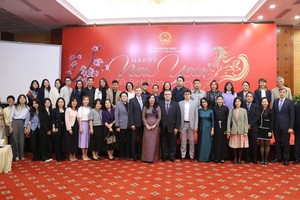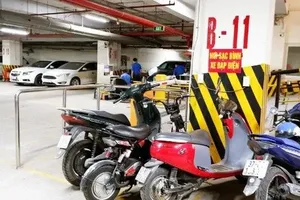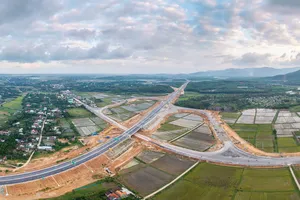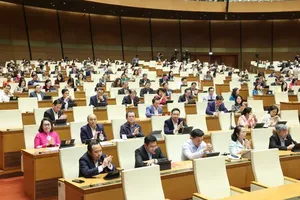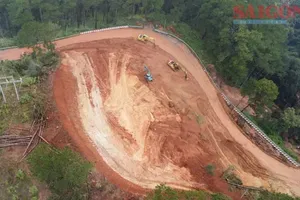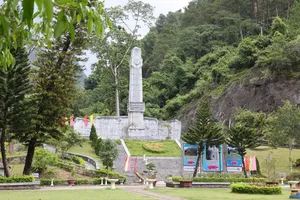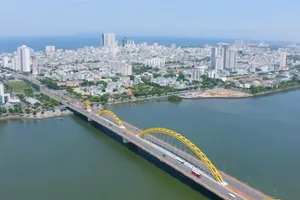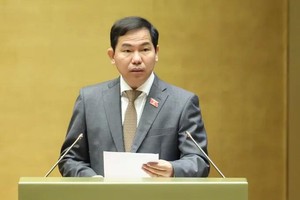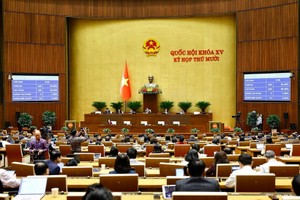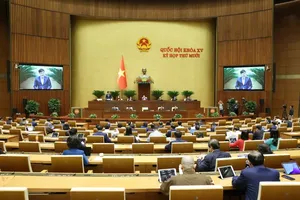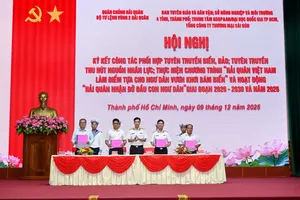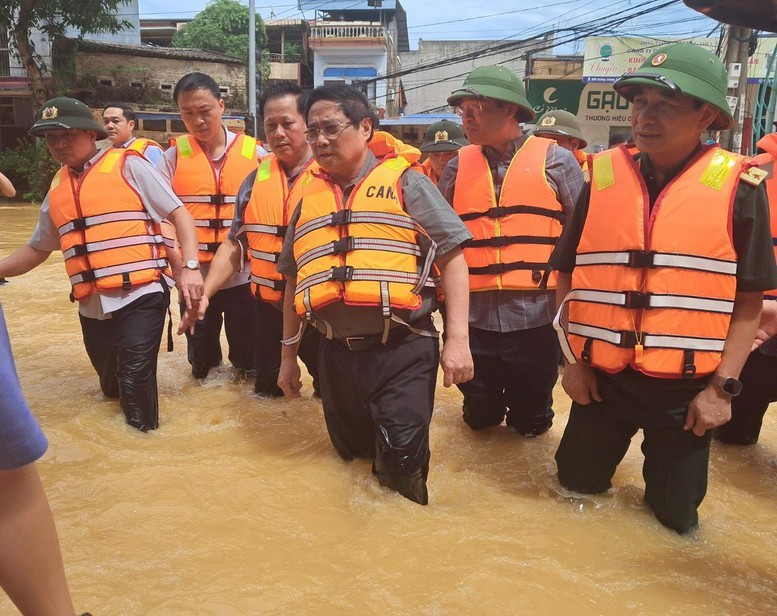
Prime Minister Pham Minh Chinh arrived in Thai Nguyen Province at noon on October 8 to inspect the situation on the ground, check on local residents’ living conditions, and encourage forces engaged in flood response, rescue, relief, and disaster recovery operations. Accompanying him was Minister of National Defense Phan Van Giang.
According to the National Center for Hydrometeorological Forecasting, the circulation of storm No.11 on October 7 triggered heavy to torrential rain across the Northern region and Thanh Hoa Province, with Thai Nguyen, Bac Ninh, Lang Son, and Hanoi among the hardest-hit areas. Cumulative rainfall in many locations reached 300–400mm, with some exceeding 560mm. A major flood formed on the Cau River, with the water level at Gia Bay Station (Thai Nguyen) peaking at 29.9 meters at 3 a.m. on October 8 — surpassing the 2024 historic record of 28.81 meters. Widespread flooding was reported in Bac Ninh, Lang Son, and Cao Bang provinces, particularly severe in Thai Nguyen.
In Thai Nguyen, moderate to torrential rains have caused complex and unpredictable flooding developments, resulting in serious human and property losses, infrastructure damage, and disruptions to production, severely affecting local livelihoods. Preliminary statistics show four deaths, two people missing, and two injured; about 5,450 houses damaged. Many areas have experienced landslides, flooded or cut-off roads, and isolated neighborhoods and communes.
Visiting disaster-affected residents and rescue forces in Phan Dinh Phung Ward, Thai Nguyen City, the Prime Minister offered his deepest condolences to the families of the victims and expressed sympathy for the hardships faced by local authorities and communities in disaster-hit areas.
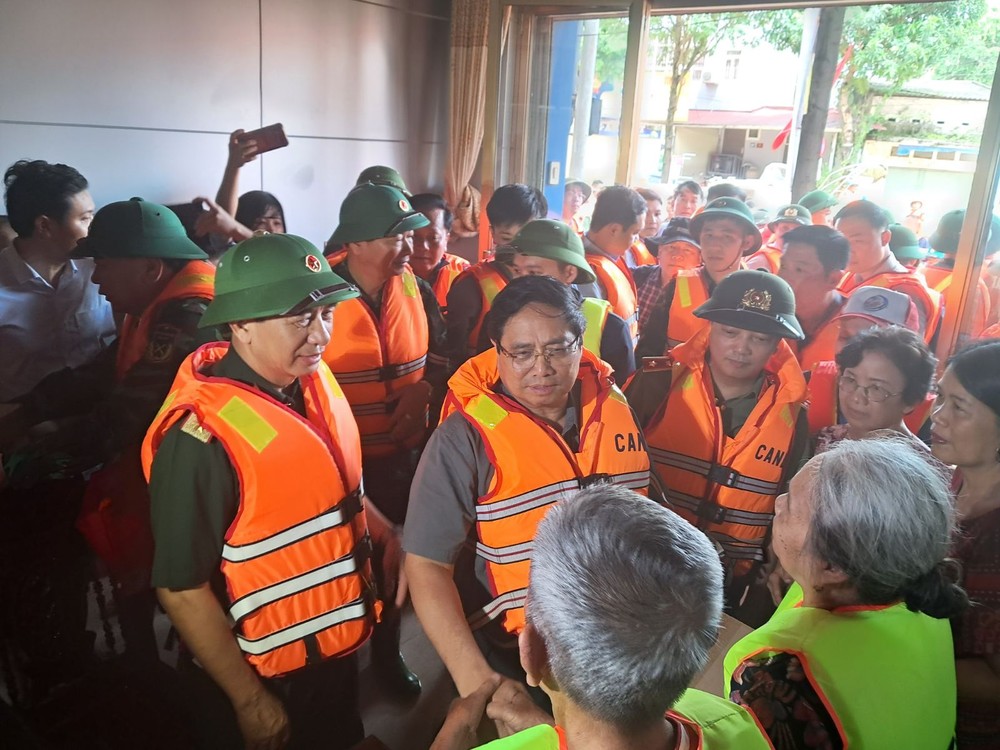
He affirmed that the Party and the State fully empathize with and share the pain and difficulties of people in disaster-affected regions nationwide. The Government has urgently directed the implementation of immediate measures to mitigate the impacts of storms and floods and stabilize people’s lives as quickly as possible.
The Prime Minister instructed ministries and agencies to work closely with local governments to accelerate recovery efforts, restore normalcy, and ensure timely assistance to affected residents.
In particular, he ordered the immediate deployment of emergency flood control measures in accordance with alert levels. He emphasized the need to identify deeply inundated areas and zones at risk of landslides, flash floods, or mudslides, and to proactively relocate residents — especially the elderly, children, and vulnerable groups — from danger zones to ensure the highest priority: protecting human life.
The Prime Minister also directed authorities to strengthen dike and dam safety, mobilize all available resources, equipment, and materials to promptly handle incidents from the earliest stage, and reach isolated areas to deliver food and essential supplies to households at risk of hunger — ensuring that no one is left without food or water.
He further noted that relevant ministries, agencies, and localities would be instructed to review and invest in upgrading and reinforcing critical infrastructure, including the Cau River dike system, to enhance disaster resilience and better safeguard people’s lives and property.
Earlier, on October 8, the Prime Minister approved an emergency allocation of VND140 billion from the 2025 central budget contingency fund for Thai Nguyen, Cao Bang, Lang Son, and Bac Ninh provinces to support relief efforts and initial post-flood recovery. Of the total, Thai Nguyen received VND50 billion, while Cao Bang, Lang Son, and Bac Ninh each received VND30 billion.
